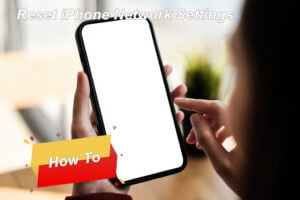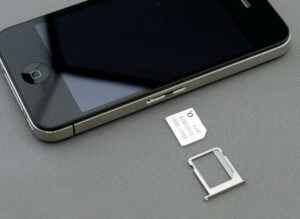Enter the eSIM, a digital SIM card that’s already built into your device, eliminating the need for physical SIM cards. This technology not only offers the convenience of easy activation but also provides the flexibility to switch between carriers without the hassle of changing physical cards.
In this article, we’ll delve into:
- A brief overview of eSIM technology and its advantages over traditional SIM cards.
- The step-by-step activation process of eSIMs, from choosing a carrier to receiving confirmation of activation.
- Factors that can influence the activation time and real-world experiences of users.
- Tips and considerations to ensure a smooth activation process.
Brief overview of eSIM technology
At its core, an eSIM is a digital SIM card. Instead of inserting a physical card into your device, the eSIM is already built-in, waiting to be activated.
The shift from physical SIM cards to digital eSIMs
This transition isn’t just about technology; it’s about convenience, efficiency, and the future of telecommunications.
What is an eSIM?
The eSIM is more than just a digital counterpart to the traditional SIM card.
Essentially, it’s a small chip embedded in your device, eliminating the need for physical SIM cards. This chip can be programmed and reprogrammed with different cellular subscriptions as needed.
Benefits of using eSIM over traditional SIM cards
- Space-saving: Devices can be designed more compactly without the need for SIM card slots.
- Flexibility: Switching between carriers or plans becomes a breeze.
- Durability: With no physical component to wear out or get damaged, the eSIM’s lifespan is extended.
The Activation Process of eSIM

Activating an eSIM is a straightforward process, but it’s essential to understand the steps involved.
Pre-activated eSIMs and their immediate usability
Some devices come with eSIMs ready to connect. Turn on your device, and you’re online!
Activation through SMS links for non-active eSIMs
For those eSIMs that aren’t pre-activated, carriers often send an SMS with an activation link. This method also allows carriers to collect necessary user information as mandated by local regulations.
Step-by-step guide to activating an eSIM:
- Choosing the carrier: Research and select a carrier that offers eSIM plans compatible with your device.
- Acquiring the QR code or activation code: This code is your key to the network. It can be provided in-store, via email, or even through the carrier’s app.
- Scanning or entering the code into the device: This step is usually done through the device’s cellular settings.
- Confirmation of activation: Once the eSIM is active, you’ll receive a notification. This is your green light to start using the network.
Learn more: How To Activate eSIM on Android!
Expected Activation Time
While eSIM activation is generally quick, several factors can influence the time it takes.
General timeframe
For most users, activation takes anywhere from a few minutes to an hour. However, this can vary based on several factors.
Factors affecting activation time
- Carrier Processing Time: Different carriers have different processing speeds. Some might have you online in minutes, while others might take a bit longer.
- Network Congestion: Just like traffic on the road, digital traffic can cause delays. High demand times, like during promotions or product launches, can see a spike in activations, leading to potential delays.
- Device Compatibility: Not all devices support eSIMs. Ensure your device is compatible to avoid unnecessary delays.
Real-world Activation Experiences
While the activation process is designed to be smooth, real-world experiences can vary.
- Quick activations: Many users find the process seamless, with activations completing in seconds.
- Challenges faced: As with any technology, hiccups can occur. Some users have reported needing to restart the activation process or even their device to get things moving.
- What to do if you lose your QR code: If you misplace your activation code, don’t fret. Contacting your carrier will usually allow you to retrieve it or get a new one.
- Personal anecdotes: Real stories from users can provide valuable insights. For instance, some have shared that while their first eSIM activation took time, subsequent activations were much faster.
Factors to Consider for Smooth Activation
To ensure a smooth activation process, consider the following:
- Ensuring device compatibility with eSIM technology: Before starting the activation process, check if your device supports eSIM technology.
- Checking carrier support for eSIMs: While eSIM technology is growing in popularity, not all carriers support it. It’s essential to check with your chosen carrier before proceeding.
- Being prepared for potential network congestion: If you’re activating your eSIM during a known busy period, be prepared for potential delays and be patient.
Conclusion
The world of eSIMs is here, offering a glimpse into the future of mobile connectivity. With its myriad of benefits and the promise of a more connected future, eSIM technology is set to become the new norm. As with any new technology, there might be a learning curve, but the convenience and efficiency it offers make it worth the effort.
FAQs
To wrap things up, let’s address some common questions:
How long does it typically take to activate an eSIM? On average, a few minutes to an hour. However, this can vary based on several factors discussed above.
What should I do if my eSIM activation is delayed? Reach out to your carrier for assistance. They can provide guidance and help troubleshoot any issues.
Is eSIM secure? Yes, eSIM technology comes with robust encryption and verification processes to ensure user data safety.
Can I use both eSIM and physical SIM on the same device? Many modern devices support dual SIM functionality, allowing users to have both an eSIM and a physical SIM active simultaneously.
Is it possible to switch back to a physical SIM after using eSIM? Absolutely. If you ever decide to revert to a physical SIM, contact your carrier for the switch.







